
An elegant living room
A. Introduction:
Demand for sustainable interior design has never been stronger as global knowledge of environmental problems keeps rising. Both homeowners and companies are looking for ways to design living and workplace environments that are not only aesthetically pleasing and useful but also eco-friendly and health-conscious. Sustainable interior design provides a complete strategy for building environments that reduce negative effects on the earth and improve occupant well-being.
Fundamentally, sustainable interior design gives careful space planning, energy-efficient technologies, and environmentally friendly materials top priority in order to lower resource use and waste. Designers may produce environments that support the environment and the people who live in them by carefully choosing materials, maximizing natural light, and using biophilic components.
Beyond just looks, sustainable design provides real advantages, including better indoor air quality, reduced utility bills, and higher property values.
The main ideas and techniques of sustainable interior design will be discussed in this paper, along with creative materials, technologies, and design methods that change our perspective of our constructed surroundings.
From recycling old furniture to including smart home technologies, we’ll find original approaches to creating healthy, environmentally friendly areas that delight and inspire. Come along on this road towards a more sustainable future, wherever environmental responsibility and exquisite design coexist.
B. What is sustainable interior design?
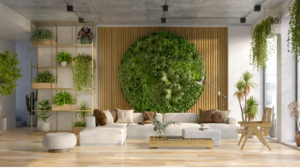
Energy-Efficient Design
- Use natural lighting and efficient artificial lighting to reduce energy consumption.
- Incorporate proper insulation, shades, and reflective surfaces to regulate. temperature and minimize heating/cooling needs.
- Select energy-efficient appliances and electronics.
Eco-Friendly Material Selection
- Choose renewable, recyclable, and non-toxic materials with low embodied carbon.
- Prioritize locally-sourced and sustainably-harvested materials to minimize environmental impact.
- Avoid materials that emit volatile organic compounds (VOCs), which can negatively impact indoor air quality.
Water Conservation
- Install water-efficient fixtures, appliances, and irrigation systems.
- Implement greywater recycling systems to reuse wastewater for irrigation or flushing toilets
- Educate occupants on water conservation practices
Healthy Indoor Environment
- Ensure adequate ventilation and filtration to improve indoor air quality
- Use natural and artificial lighting to enhance occupant comfort and productivity
- Incorporate biophilic design elements like plants and natural materials to connect occupants with nature
Adaptable and Durable Design
- Create flexible, multi-functional spaces that can adapt to changing needs over time
- Select durable materials and furnishings that can withstand heavy use and be easily repaired or replaced
- Prioritize modular and prefabricated components to minimize construction waste
When building aesthetically beautiful and functionally useful indoor environments, sustainable interior design stresses environmental responsibility, energy economy, and occupant well-being. The main ideas and techniques of sustainable interior design include these:
C. Why is sustainable interior design important?
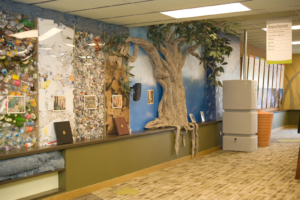
Environmental Impact
For various reasons, sustainable interior design is essential; all of them help to provide a better quality of living and better surroundings. These are the main salient features that stress its significance:
Health and Well-Being
Sustainable interior design seeks to reduce the bad impact of indoor environments on the surroundings. Building carbon footprints can be greatly lowered by designers employing environmentally friendly materials and energy-efficient systems. This strategy advances natural resource preservation and aids in the fight against climate change.
Economic Benefits
Sustainable design techniques choose non-toxic materials devoid of dangerous substances, therefore prioritizing the health of the occupants. Improved indoor air quality follows from this, which is crucial for the well-being of those residing and working in these environments. Sustainable interior design can lower the possibility of health problems connected to pollutants and allergies by establishing better surroundings.
Resource Conservation
Using sustainable methods can help you save money over time. While durable materials cut the need for regular repair, energy-efficient lighting, appliances, and HVAC systems save on utility expenditures. This financial benefit motivates more customers to give sustainable design some thought as a workable choice.
Aesthetic and Functional Value
Sustainable interior design stresses the use of recycled and renewable materials, therefore helping to conserve limited resources. Designers may make wise decisions that reduce waste and support recycling by thinking through the whole lifetime of materials—from manufacture to disposal.
Social Responsibility
Advocacy of sustainability falls especially on interior designers. Their choice of environmentally friendly products and support of sustainable living help to drive a more general trend toward environmental care. This obligation also includes teaching customers about the advantages of sustainable living and motivating them to adopt more environmentally friendly behaviors.
All things considered, sustainable interior design is vital since it improves occupant well-being, generates economic advantages, preserves resources, keeps aesthetic value, and advances social responsibility. These elements, taken together, help to create a more sustainable future for the earth as well as for people.
D. Benefits of sustainable interior design
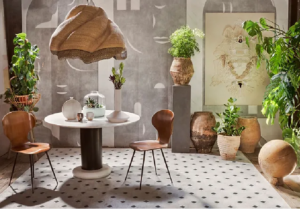
Environmental Benefits
- Reduces negative environmental impact by using eco-friendly, renewable, and recyclable materials.
- Minimizes waste and conserves natural resources.
- Lowers energy consumption through efficient lighting, appliances, and HVAC systems.
Health Benefits
- Improves indoor air quality by using non-toxic, low-VOC materials
- Enhances occupant health and well-being by incorporating natural light, ventilation, and biophilic design elements
- Promotes physical activity and mental wellness through thoughtful space planning
Economic Benefits
- Reduces long-term operating costs through energy and water efficiency
- Increases property value by incorporating sustainable features
- Saves money by using durable, high-quality materials that last longer
Social Benefits
- Demonstrates a commitment to environmental stewardship and social responsibility
- Educates and inspires others to adopt sustainable practices
- Contributes to a healthier, more livable built environment for present and future generations
Giving sustainability top priority in interior design can help us produce not only aesthetically pleasing but also ecologically conscious, health-promoting, and financially feasible homes. Building a more sustainable future depends in large part on sustainable interior design.
E. Technology in sustainable design
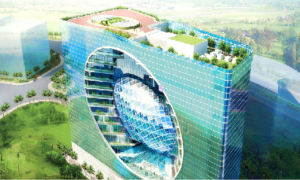
1. Building Information Modeling (BIM)
By including creative ideas that reduce environmental impact while improving efficiency and functionality, technology is helping sustainable design advance. These are some of the main ways in which technology supports sustainable design:
2. Automation and Artificial Intelligence (AI)
BIM technology lets builders and designers produce finely detailed digital models of their creations. This makes resource management, daylighting studies, and energy analysis easier, so optimizing designs for sustainability and energy efficiency all through the building life.
3. Renewable Energy Integration

Sustainable design depends on technologies such as solar panels and wind turbines, which let buildings create their own energy. This lessens greenhouse gas emissions and dependency on fossil fuels, therefore promoting a more sustainable energy scene.
4. Smart Technologies :
By means of Internet of Things (IoT) devices in buildings, real-time monitoring and management of energy use, water use, and indoor temperature is made possible. This data-driven strategy aids in better general building performance and resource economy optimization.
5. Sustainable Materials and Manufacturing
Thanks to developments in materials science, environmentally friendly, durable, and sustainable materials have become possible. By enabling exact component manufacture and, hence, minimising excess material use, technologies such as 3D printing can also help to reduce waste.
6. Life Cycle Assessment (LCA) Tools
Thanks to developments in materials science, environmentally friendly, durable, and sustainable materials have become possible. By enabling exact component manufacture and, hence, minimising excess material use, technologies such as 3D printing can also help reduce waste.
7. Cradle-to-Cradle Design
From manufacture to disposal, LCA methods assess materials’ and designs’ environmental impact all through their lifetime. This enables designers to make well-informed decisions, giving sustainability first priority and reducing environmental impact.
8. Eco-Friendly Building Certifications
This design concept promotes a circular economy by encouraging the production of goods that can be totally reclaimed or recycled. Implementing cradle-to-cradle concepts in sustainable design depends on technologies that enable recycling and upcycling.
9. Data Analytics for Sustainability
LEED and Green Globes are two technologies that enable adherence to green building criteria, therefore guaranteeing that sustainable design principles are fulfilled. These certificates encourage the application of sustainable design and building techniques in industry.
10. Collaboration Platforms
Technological tools help stakeholders—including architects, engineers, and clients—to coordinate so that sustainable practices are included from the start to the completion.
All things considered, technology improves sustainable design by means of tools and approaches that support environmental responsibility, resource economy, and energy efficiency, thereby producing healthier and more sustainable built environments.
F. Top 12 eco-friendly interior design ideas

1. Energy-Efficient Design
Add design features and energy-efficient architecture, including naturally occurring illumination, well-insulated windows, and energy-efficient appliances. Using solar electricity or other renewable energy sources will help your house’s energy use be much lowered.
2. Use Recycled or Upcycled Furniture
Choose furniture created from recycled materials or give thought to upcycling already owned items. Old furniture refurbs not only cut waste but also provide your room distinctive charm. Another excellent approach to discovering environmentally friendly design is thrift shopping for vintage objects.
3. Choose Sustainable Materials
Choose low-environmental-impact, renewable materials, including bamboo, cork, repurposed wood, and jute, a natural fiber. These environmentally friendly materials can give your home warmth and texture.
4. Maximize Natural Light
Using big windows, skylights, and light-colored walls will help you design your area to maximize natural light. This produces a brilliant, welcoming environment and lessens the demand for daytime artificial lighting.
5. Incorporate Indoor Plants
Including indoor plants helps to improve the air quality in your house and raises its visual attractiveness. To establish a green and healthy indoor environment, choose low-maintenance plants such as succulents or air-purifying variants like snake plants.
6. Install Water-Efficient Fixtures
Upgrade to low-flow faucets and showerheads, among other water-saving devices. These little adjustments will greatly cut water use and lower utility costs, therefore increasing the sustainability of your house.
7. Embrace Minimalism
Design with simplicity can help to lower clutter and unnecessary consumption. Emphasize useful furniture and décor pieces that advance a more sustainable living environment by helping to keep the house cleaner. Using these environmentally friendly interior design ideas can help you build a lovely, useful, and sustainable house that advances your well-being as well as the surroundings.
8. Non-Toxic Paints and Finishes
When decorating your homes, choose low-VOC, non-toxic, volatile organic compounds for paints and finishes. Conventional paints add to indoor air pollution by releasing dangerous chemicals into the atmosphere. Safer for the environment and your health, non-toxic choices guarantee better indoor air quality.
9. Upcycle Textiles
Think about upcycling old fabrics rather than new ones. Turn used-outdated drapes into cushion covers or create original wall hangings from fabric leftovers. This method not only cuts waste but also gives your décor some individual character.
10. Maximize Natural Ventilation
Plan your environment to improve natural ventilation, therefore lessening the need for air conditioning. Well-located windows and vents enable cross-ventilation, therefore encouraging fresh air movement and preserving a healthy indoor temperature without too much energy use.
11. Use Sustainable Flooring Options
Select flooring from recycled wood, cork, or bamboo, among other sustainable resources. These choices are fashionable and environmentally friendly, as well as strong.They may greatly lessen the environmental impact of your house and give your inside warmth and charm.
12. Incorporate Smart Home Technology
Make the best use of energy by using smart home technology. Programmable smart thermostats, lighting systems, and appliances help them run effectively, therefore lowering energy use and costs.
This technology improves convenience while letting you better manage the environmental effects of your house.Combining these environmentally friendly interior design concepts will help you construct a sustainable living environment that is fashionable yet also responsible for the surroundings.
G. What are some unique ways to repurpose old items in eco-friendly interior design?
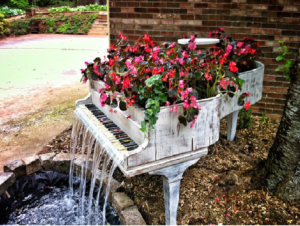
1. Repurposed Furniture
- Turn an old dresser into a bathroom vanity by removing the drawers and modifying it to fit plumbing fixtures
- Upcycle a vintage suitcase into a stylish chair
- Convert an outdated chair into a shelf or closet unit
2. Lighting Fixtures
- Repurpose discarded glass bottles and the top halves of bottles as lamp fixtures
- Use old bowlers as lamps
- Transform an old telephone into a unique lamp
3. Storage Solutions
- Recycle wooden crates into floating wall shelves or storage units
- Use old CD bins as string-dispensing storage
- Repurpose paper towel rolls for bag storage
4. Wall Decor
- Upcycle tennis rackets into stylish mirrors
- Create a mattress spring flower wall
- Use chicken wire in an old room divider to showcase photos and artwork
5. Planters and Greenery
- Grow herbs, flowering plants or succulents in repurposed teacups, teapots or other old crockery
- Upcycle an old flour sifter into a planter
- Reuse cardboard milk or juice cartons as planters wrapped in fabric
6. Miscellaneous
- Turn an old ladder into a unique bookshelf
- Repurpose old books into shelves
- Use expired credit cards to make guitar picks
The key is to look at everyday objects with a fresh perspective and imagine how they can be transformed into functional and stylish elements for your home. Repurposing not only reduces waste but also adds a personalized, eco-friendly touch to your interior design.
H. How does sustainable interior design impact occupant health and well-being?
Through several approaches that give environmental responsibility top priority and improve living conditions, sustainable interior design greatly affects occupant health and well-being. Sustainable design mostly helps to create a better indoor environment in these main ways:
1. Improved Indoor Air Quality
Low-VOC (volatile organic compounds) materials used in sustainable interior design stress their non-toxic nature. This decision greatly lessens the dangerous substances that are emitted into the atmosphere, thereby aggravating headaches, respiratory difficulties, and other medical conditions. Natural elements like wood and stone can designers improve indoor air quality even more, so providing a better living environment for the residents.
2. Maximizing Natural Light
In sustainable design, natural light is absolutely essential since it not only lessens dependency on synthetic lighting but also improves mood and output. Natural light helps control the circadian rhythm of the body, encouraging improved sleep patterns and general well-being. Mirroring natural sunlight, light therapy has been demonstrated to help with seasonal depression and enhance mental wellness.
3. Enhanced Ventilation
Operable windows and cross-ventilation systems are two common ways sustainable design addresses better ventilation. These techniques improve air circulation, therefore lowering indoor pollutants and improving living conditions. Maintaining ideal humidity levels and stopping the accumulation of dangerous chemicals indoors depend on proper ventilation.
4. Biophilic Design Elements
Combining biophilic design concepts—which link people with nature—has been demonstrated to boost general well-being, lower stress, and improve cognitive ability. Including organic materials, water features, and plants helps to create peace and supports mental health by means of natural surroundings. Creating environments that enhance occupant wellness depends on this relationship to nature
5. Encouragement of Physical Activity
Design that supports mobility and interaction can inspire physical activity. Healthy lives can result from careful plans that enable walking and socializing, as well as from including open areas and staircases. For tenants, this emphasis on active living supports their emotional as well as physical health.
By means of better indoor air quality, maximum natural light, improved ventilation, the inclusion of biophilic components, and the promotion of physical activity, sustainable interior design essentially contributes to increasing occupant health and well-being. These techniques not only provide visually appealing surroundings but also help to build settings that support the general health of people and communities.
I. Conclusion
As we have seen, sustainable interior design provides a complete method for building living and business environments that are not only aesthetically pleasing but also ecologically friendly and health-promoting. Designers may greatly lessen the negative effects of interior spaces on the earth by giving eco-friendly materials, energy-efficient systems, and careful space planning top priority. This will improve occupant well-being.
From better indoor air quality and less resource use to higher property values and cheaper utility bills, sustainable interior design has many far-reaching advantages. Most importantly, sustainable design produces environments that support general well-being by means of physical and mental health enhancement, therefore strengthening the link to nature.The demand for sustainable interior design will only rise as worldwide knowledge of environmental problems keeps developing.
Designers, companies, and homeowners all have an obligation to adopt environmentally friendly methods and build areas that foresee a more sustainable future. Incorporating creative materials, technologies, and design techniques can help us to rethink our constructed surroundings and create places that minimize our environmental impact yet inspire and delight.
Every one of us starts the path towards a more sustainable future in the places we design and in the decisions we make. Adopting sustainable interior design ideas would help us contribute to a better quality of life for all people and the planet. It’s time to reconsider how we build our homes, giving occupant well-being and environmental responsibility first priority for a more sustainable future.
J. FAQs
What is sustainable interior design?
Sustainable interior design focuses on creating spaces that are environmentally friendly, resource-efficient, and healthy for occupants.
Why is sustainable interior design important?
It reduces environmental impact, promotes health and well-being, and often leads to cost savings through energy efficiency.
What are some key principles of sustainable interior design?
Use of eco-friendly materials, energy efficiency, water conservation, indoor air quality, and waste reduction.
How can I choose eco-friendly materials for my home?
Look for materials that are recycled, renewable, non-toxic, and certified by environmental organizations like LEED or FSC.
What are VOCs, and why should they be avoided in interior design?
Volatile organic compounds (VOCs) are harmful chemicals that can off-gas from products like paints and furnishings, impacting indoor air quality and health.
How can I make my home more energy-efficient?
Use energy-efficient appliances, LED lighting, proper insulation, and smart thermostats to reduce energy consumption.
What role do plants play in sustainable interior design?
Plants improve air quality, add natural beauty, and can create a calming environment, contributing to the overall health and well-being of the space.
Can sustainable design be stylish and modern?
Yes, sustainable design can be both stylish and modern, incorporating contemporary aesthetics while using eco-friendly materials and practices.
How can I reduce water usage in my interior design?
Install low-flow faucets and showerheads, choose water-efficient appliances, and consider greywater systems for irrigation.
What is the role of furniture in sustainable interior design?
Choose furniture made from sustainable materials, such as reclaimed wood or bamboo, and consider second-hand or upcycled pieces to reduce waste and resource consumption.

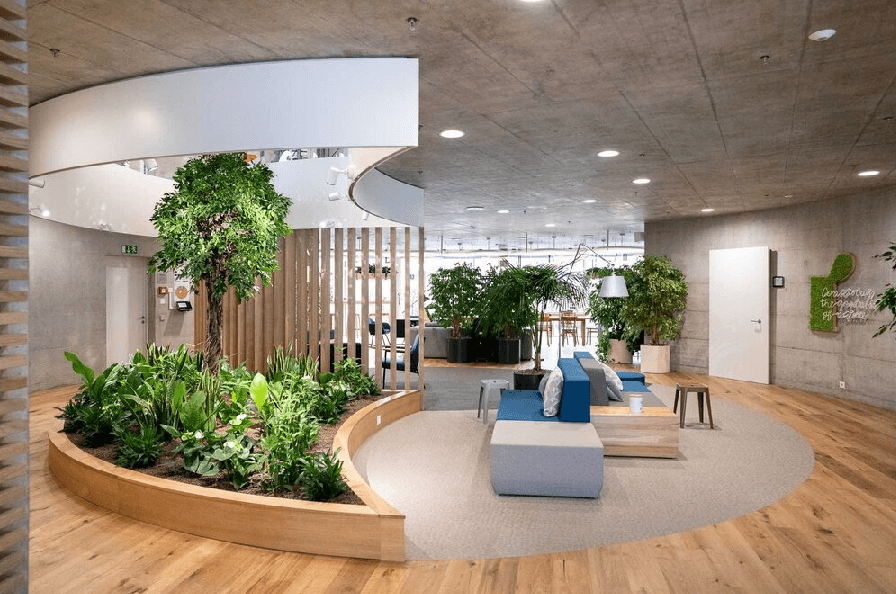
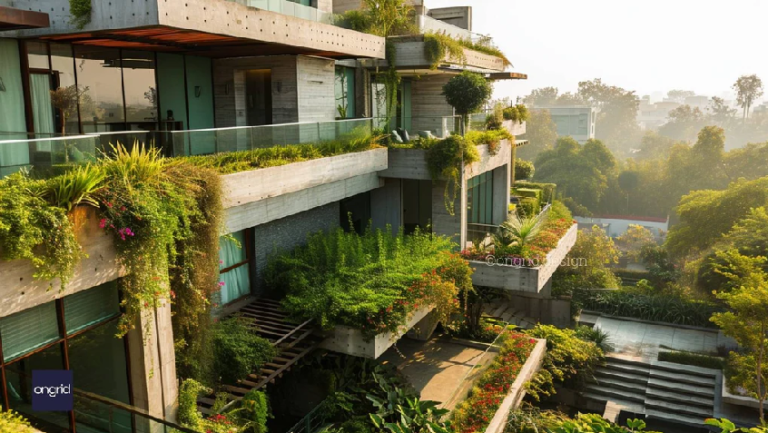
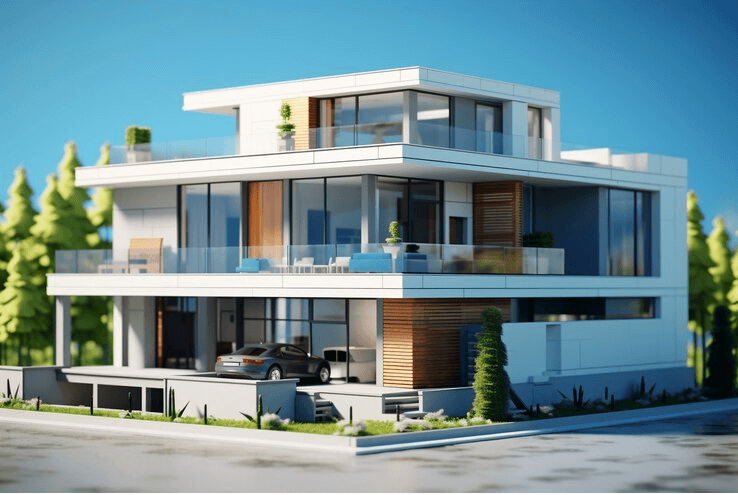
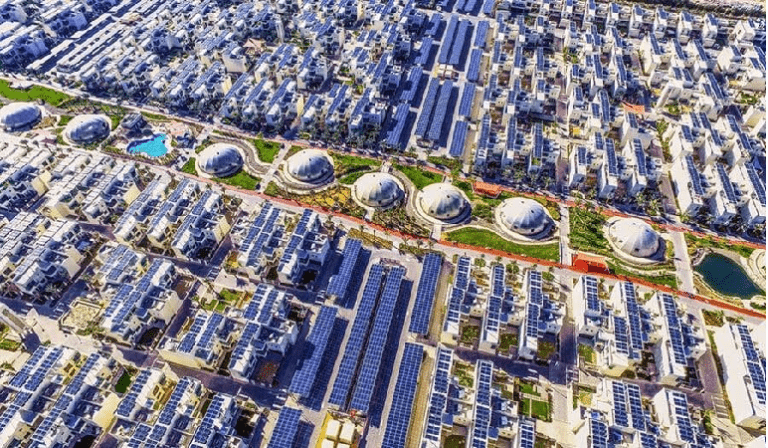
FinTechZoomUs Nice post. I learn something totally new and challenging on websites